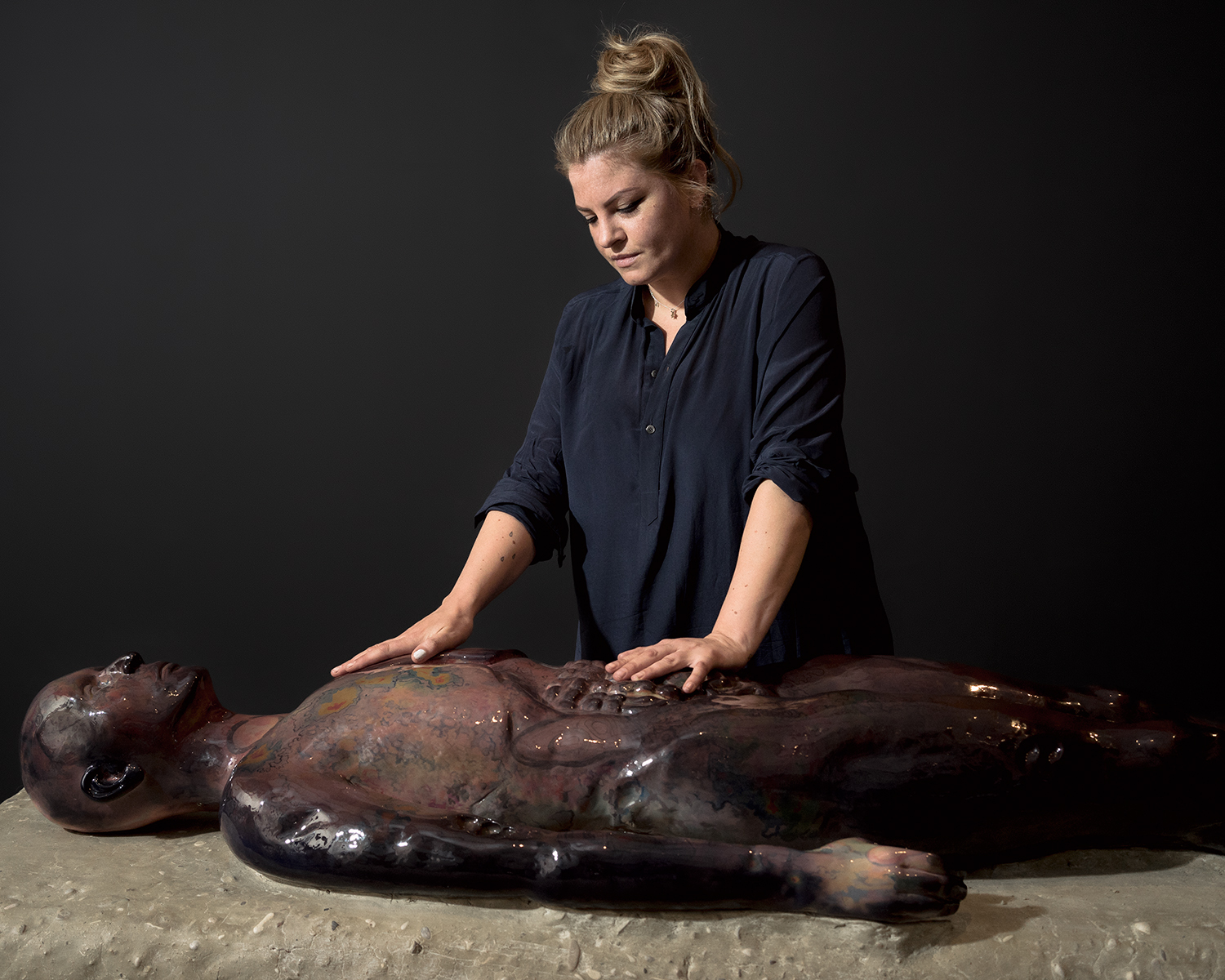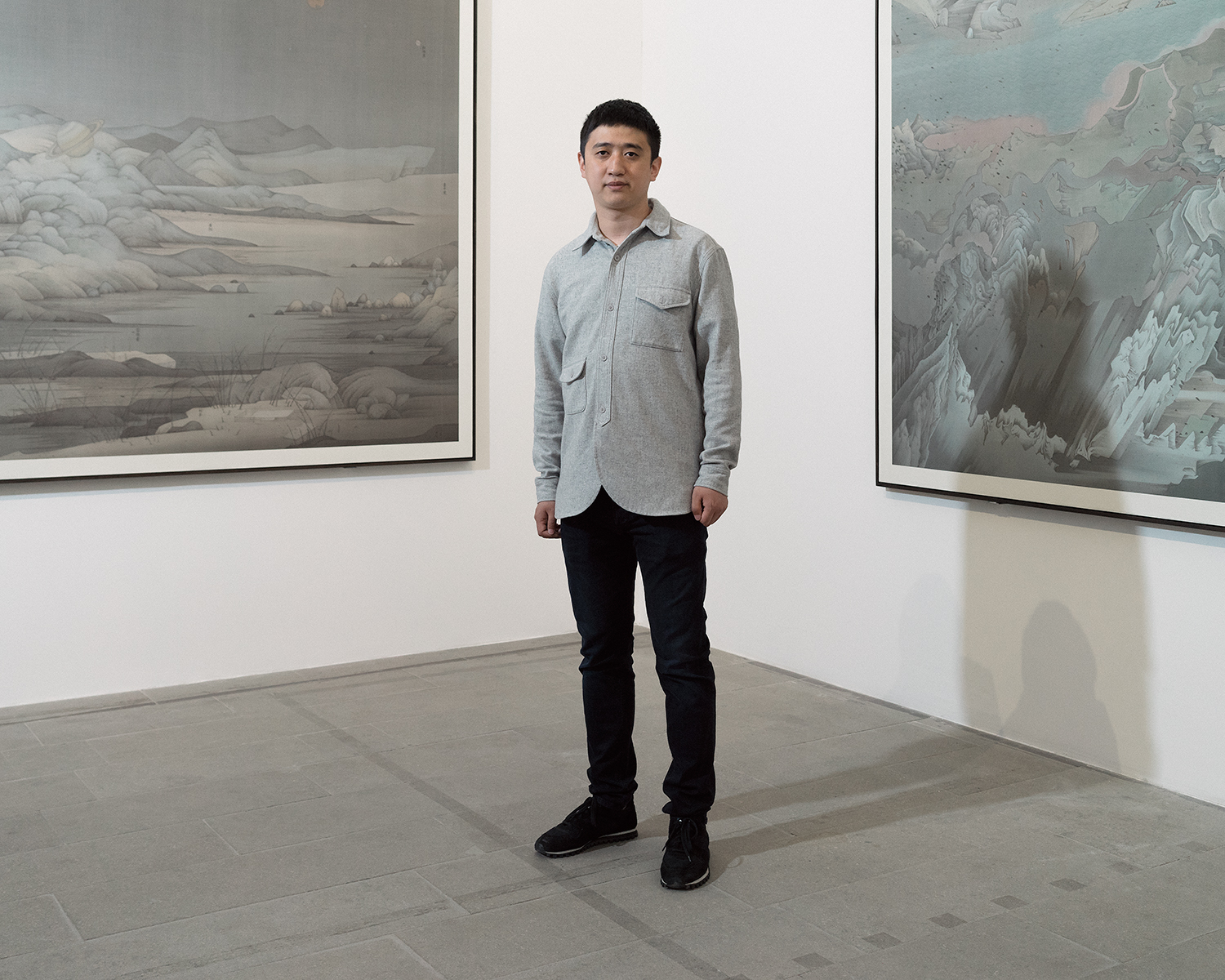This article originally appeared on Creators.
Every two years, the Venice Biennale sets the stage for investigative art that represents the current human condition and grapples with identity, nationality, and liberty. Established in 1895, the Biennale today invites artists from all over the world to share their work on a global stage. 120 artists are invited to represent themselves, their countries, their aesthetics, and their personal politics to an audience of about 500,000 visitors over the course of six months.
Videos by VICE
Since its inception, artist reputations have been made, catapulting some to fame and others into webs of controversy. Says curator Christine Macel, the director of the 2017 Venice Biennale, “The role, the voice and the responsibility of the artist are more crucial than ever before within the framework of contemporary debates. It is in and through these individual initiatives that the world of tomorrow takes shape.”
Creators visited the 57th Venice Biennale to meet with the youngest artists of the exhibition. Here we selected nine rising international art stars, hailing from the Republic of China to Kosovo, who span disciplines, mediums, and themes. We wanted to learn more about their provocations, inspirations, and what it feels like to make art specifically with the Biennale in mind.
Guan Xiao, Beijing, China

Guan Xiao sees her role as has a constructor and spectator in finding online content and creating a new visual language. Concerned in the ways to achieve expression, the video artist and sculptor scours the internet to find images and sounds with which she makes video collages. In her humorous three-channel video piece, David, Xiao pieces together downloadable material from YouTube to explore the iconic Renaissance sculpture by Michelangelo. Most of what she had to work with came from videos made by tourists who were more concerned with documenting their art pilgrimage than having any cultural insight to the sculpture’s significance. Xiao says, “We ‘see’ with our eyes, but actually this is not the most important thing. What is important is that we are using all our senses to remember. I decided to put all these ‘worthless’ videos together to make my work.” Xiao’s video takes on an ambivalent tone as the artist sings over a video montage of all of the ways in which the statue of David exists in a modern-day context, from mass produced commercial goods to its celebrity-like status. Her lyrics playfully question collective cultural memory: “We don’t know how to see [ David]… Only recording, but not remembering…”
Pauline Curnier Jardin, Marseille, France

When entering the cave-world of Pauline Curnier Jardin‘s film, Grotta Profunda, Approfundita, one passes through a splayed and grotesque hand into a dank and dark viewing room. The red-hued campy film on display is loosely based on the life of Bernadette Soubirous, a Catholic figure who encountered visions of the Virgin Mary in a cave in the French Pyrenees. Yet, Jardin’s version distills the experience into an erotic awakening, a return to our primitive animal instincts, and venerates the naked female body. The experience is enhanced by the placenta-like room Jardin designed with playground granulates that lets viewers sit or lay on the floor with ease to consider the celebration of the female body. Of her installation, Jardin says, “I dive into research about a cave in its very polysemic polymorphic definition.” Jardin’s film is inspired by the psychedelic aesthetics of 70s pornography, specifically Behind the Green Door, and its title is loosely based on Deep Throat. She says, “The film is called Grotta Profunda because deep throat in French is gorge profonde so it was also making fun of this movie that we know is problematic, when we look at how pornography is playing with subjectivity and objectivity around the woman.” Jardin’s womb-room is meant to elevate the many iterations of the female body and remind us of its capacity to contain the wisdom through the ages.
Petrit Halilaj, Republic of Kosovo

Within the core of the Arsenale building, fabric moth sculptures are hidden in the rafters, and fill artist Petrit Halilaj‘s exhibition space, titled, Do you realize there is a rainbow even if it’s night!? The moth structures, handcrafted by Halilaj and his mother out of traditional Qilim carpets from Kosovo, shift between objects hanging on a wall and costumes for the artist to wear during poetic live performances. Halilaj’s moths personify the wondrous capacity for self-expression, recognition of his own sexuality, and the symbolic dance between self and society. “I can enter and the body disappears becoming an insect. So with this idea of hiding and becoming an insect, I just escaped another time to talk and confess about something that is still too complicated,” the artist tells Creators. Halilaj’s autobiographical installations grapple with the weight of exile, war, and abandoned territory—at the age of 12, his family fled the Kosovo War to an Albanian refugee camp. He pulls inspiration from animal nature to translate emotions of catharsis. He says, “I would try to dream something beyond verbal, a different kind of language that would be added to my body. This is the first costume or performative sculpture that has different layers coming from history, culture, and personal nature.”
Taus Makhacheva, Moscow, Russia

In Taus Makhacheva’s video installation, Tightrope (2015) , a real-life tightrope walker balances between two rugged cliffs, carrying an entire collection of modern art from one side to the other. The daring act symbolizes our modern fascination with categorizing and archiving art collections. The project, realized in collaboration with the Museum of Dagestan, uses 61 actual works of art from the museum’s storage to display the fine line between valuing local heritage and a community entering a larger global narrative. Makhacheva wants us to question the strategies contemporary museums from the West have on local communities and what happens to the art of the past (pre- and post-Soviet times, in this case). There are battle paintings from the Caucasian War alongside social realism. In the beautifully composed cliffhanger, we are left to resolve our own cultures and representation of them. Makhacheva puts forth the tensions between tradition and modernity, local and global. She says, “There’s this idea of balancing when you’re involved in cultural production, balancing with survival and balancing on believing that your works will enter history. For me, it was also kind of talking about how you make a certain history of art visible.”
Mariechen Danz, Dublin, Ireland

It’s hard to say what catches your eye first in Mariechen Danz’s room of exploration, Ore Oral Orientation: a soulful stream of music from a video panel beckons you in; Venetian mud coats the entire room; and three anatomical sculptures give you a peek into the human body. Along the walls are maps from Babylonia throughout the 20th century, giving the sense of a journey through history. Danz says, “I wanted to make a map where we could talk about how to ask questions about how to access knowledge and especially scientific imagery, the mappings, and then anatomy.” Something wondrous about the sense of time and history that the artist has composed feels ancient and futuristic. Danz holds our attention long enough to reflect and riff on the potential for meaning through symbols, structures, and the lyrics of a song that drop knowledge about Western reasoning. In her installation, we think of climate change, the power of written language, and the capacity for the human body to evolve despite calamity, through song, maps, and the body itself.
Thu Van Tran, Paris, France

Thu Van Tran was born in Vietnam and raised in France after being received into a refugee camp with her family. Straddling two cultures, the artist explores issues of identity, language, history, and political oppression in her conceptual artworks. For the Biennale, Tran’s exhibition space is stained in a pastel palette, with rubber and chemical pigments, to question the role of rubber production in colonial Vietnam. In the artist’s four sculptural works, the rubber tree symbolizes the abuse of power, cheap labor, and the raw materials associated with six decades of French colonialism in Vietnam. In one corner, a 16mm film plays as a projection, highlighting the repetitive movements made by laborers extracting rubber from the Hevea tree trunks. The title of her film (in English), Overly Forced Gestures, From Harvest to Fight, calls out the political and repressive air of the period. Tran says, “In French, we have this almost anagram which is de recolte, a revolt which means in a way to harvest so that was the link to all those materials facing history, putting it into the light.” The three photograms known as In the Fall, in the Rise were made by capturing the imprints of tropical plants, including Hevea tree leaves, onto Fuji-flex paper. The artist says the entire installation is meant to be a poetic account of “history but petrified into sculptural form that deliver a more dreamy and honorific dimension.”
Hao Liang, Beijing, China

Fusing traditional Chinese ink painting with surreal narratives, Hao Liang paints directly onto silk to reflect upon the past and the future. In a way, he suspends time. The artist’s aesthetic is influenced by masterpieces from the Northern Song dynasty, which dates back to as early as 960 AD. While in art school, Liang found that scholarly Chinese art forms have struggled to evolve due to the political reforms of the Cultural Revolution. For the Biennale, Liang exhibits landscapes from the Hunan Province in his own version of the traditional and iconic form, titled, Eight Views of Xiaoxiang. Most often, these pictorial scenes combine poetic writings to attain a sort of enlightenment. The paintings show a unique worldview constructed through the artist’s values and perspective, usually through deep symbolism. The artist says, “I am interested in the traditional East Asian painting theme, ‘E ight Views of Xiaoxiang. ‘ In my long-term research, the ancient subject is involved with the present knowledge, perceptions, and geography.” Liang contemporizes his paintings and the tradition by infusing the ideas of modern authors outside of China like Franz Kafka, Jorge Luis Borges, and Italo Calvino. He tells Creators, “My work is based on the Chinese ancient art traditions, trying to seek a path to contemporaneity inside Chinese culture.”
Katherine Nunez and Issay Rodrigues, Manila, Philippines

Philippino duo Katherine Nunez and Issay Rodrigues create crocheted desk paraphernalia as replicas of study materials that are void of their original function. Titled In Between Lines 2.0, the installation touches on issues of labor and education, as well as the role of books and printed materials in a modern culture that is increasingly reformatting to new technologies. Says Rodrigues, “I try to talk about things that are immediate to me, the everyday, the mundane, and also the contradictory… balancing between the digital and the physical world.” Most of the soft sculptures for the installation were crafted over six months, with the artists laboriously juggling between using a sewing machine, crocheting by hand, using a computer for research, and still balancing their day jobs. The two artists first combined their art practice for a project at the Art Dubai Maker exhibition in 2015, featuring artist-run spaces from Manila. The two artists are active members of 98B COLLABoratory in the Escolta neighborhood of Manila. The collective fosters a relationship between artists and the local community to make art more accessible and less intimidating. Nunez says, “I like doing craftwork in my works because I like being able to do something with my hands using materials and processes that are familiar or commonplace. I see art as a tool I can use to try to look for answers, to inquire, to understand, to make clearer issues that recur in my day-to-day experiences.”
The 57th Biennale di Venezia runs through November 26. Learn more about it here.
Related:
“Black Lives Matter” Makes It to the Venice Biennale
[Exclusive Photos] The ‘World’s Most Important Art Exhibition,’ a Film About the Venice Biennale




